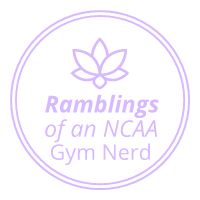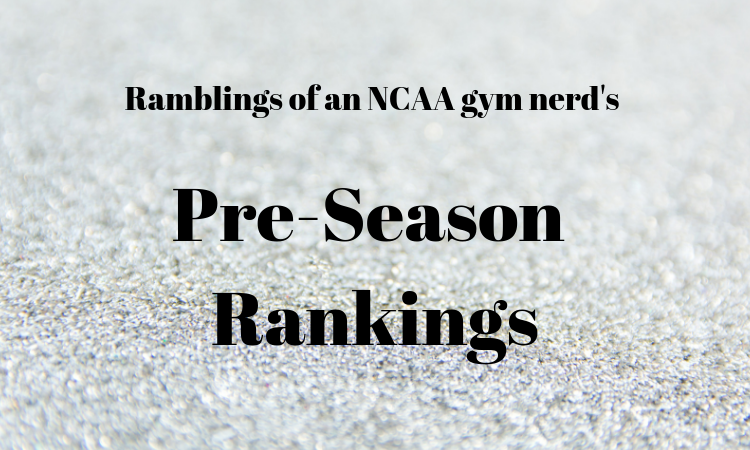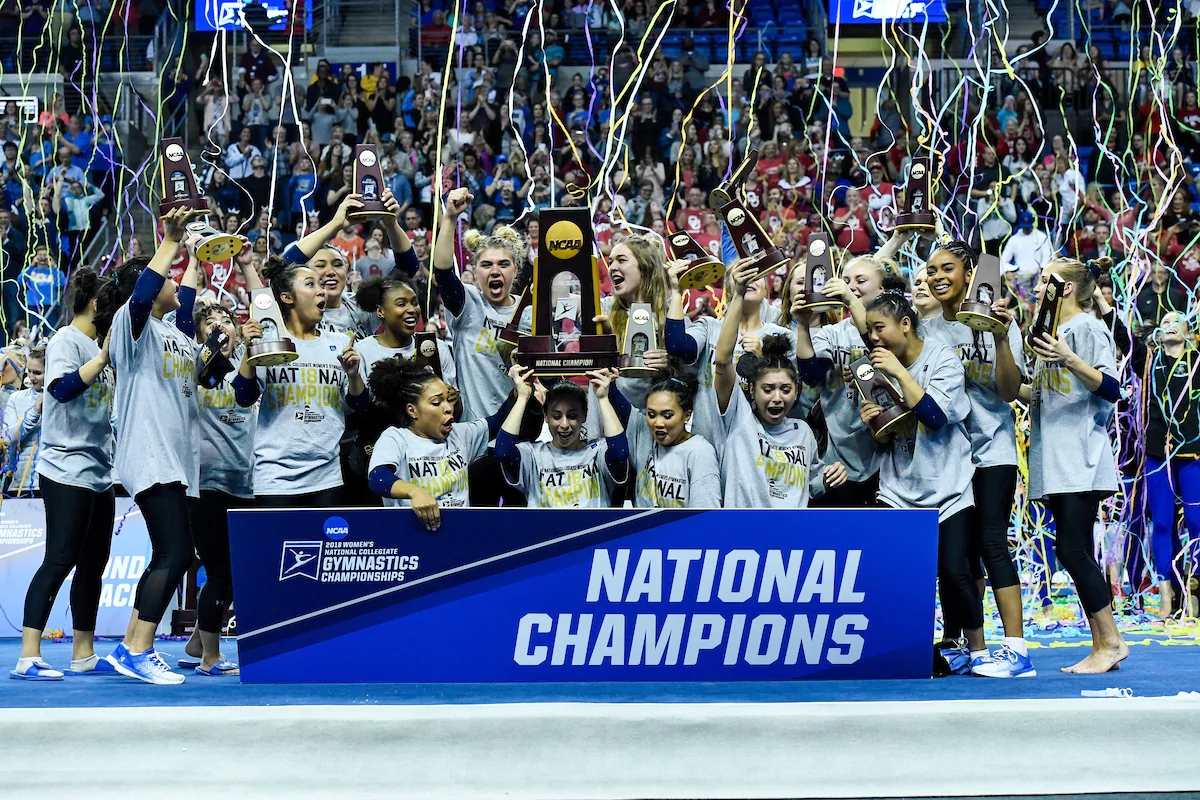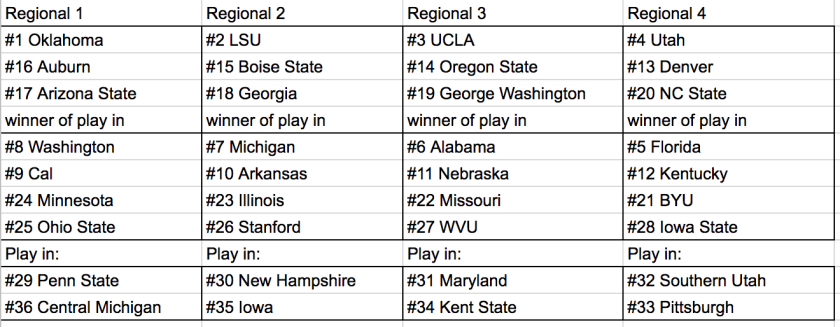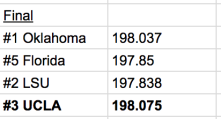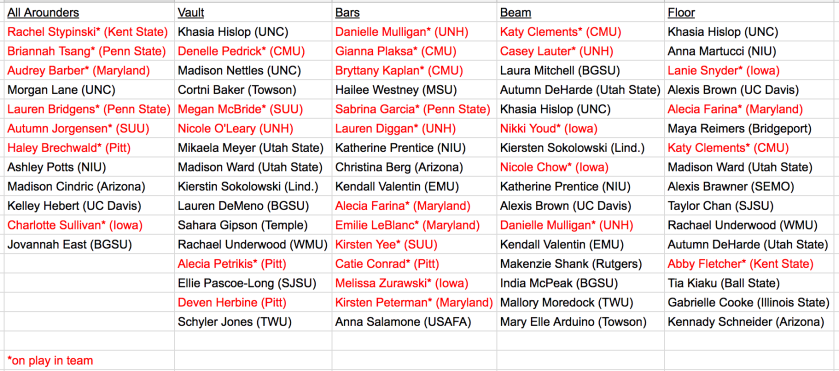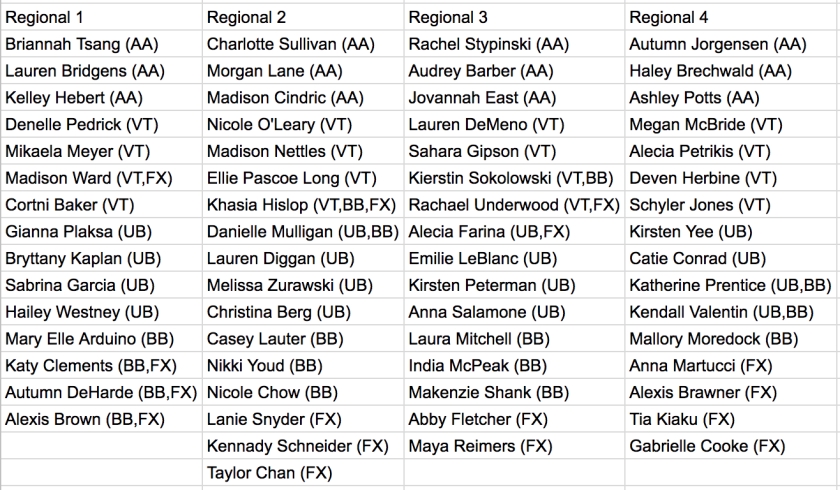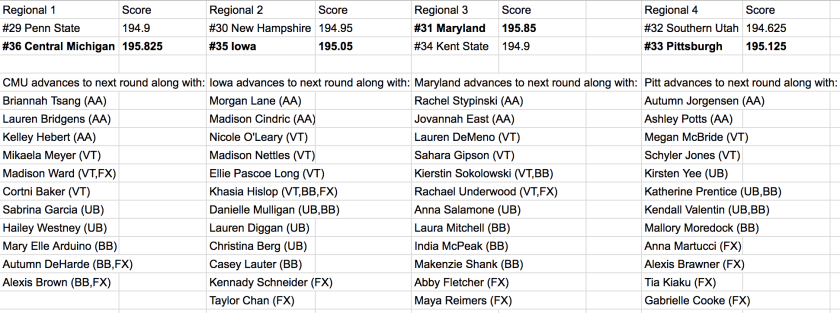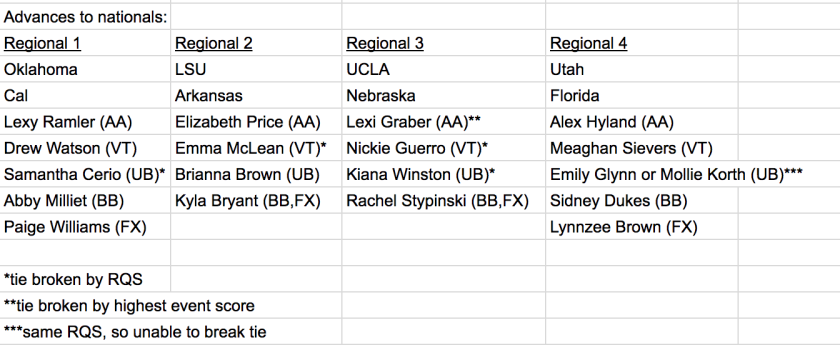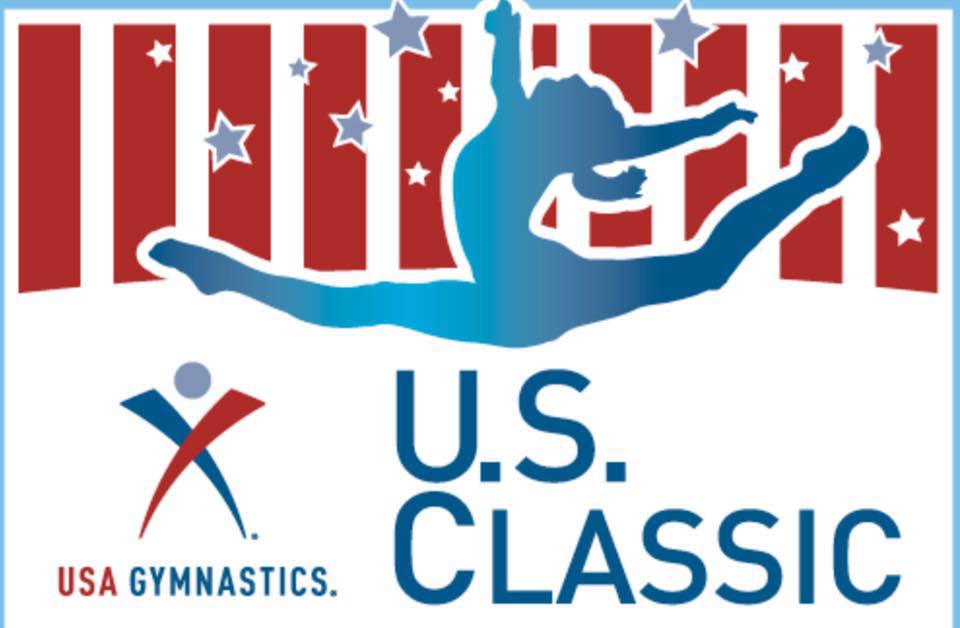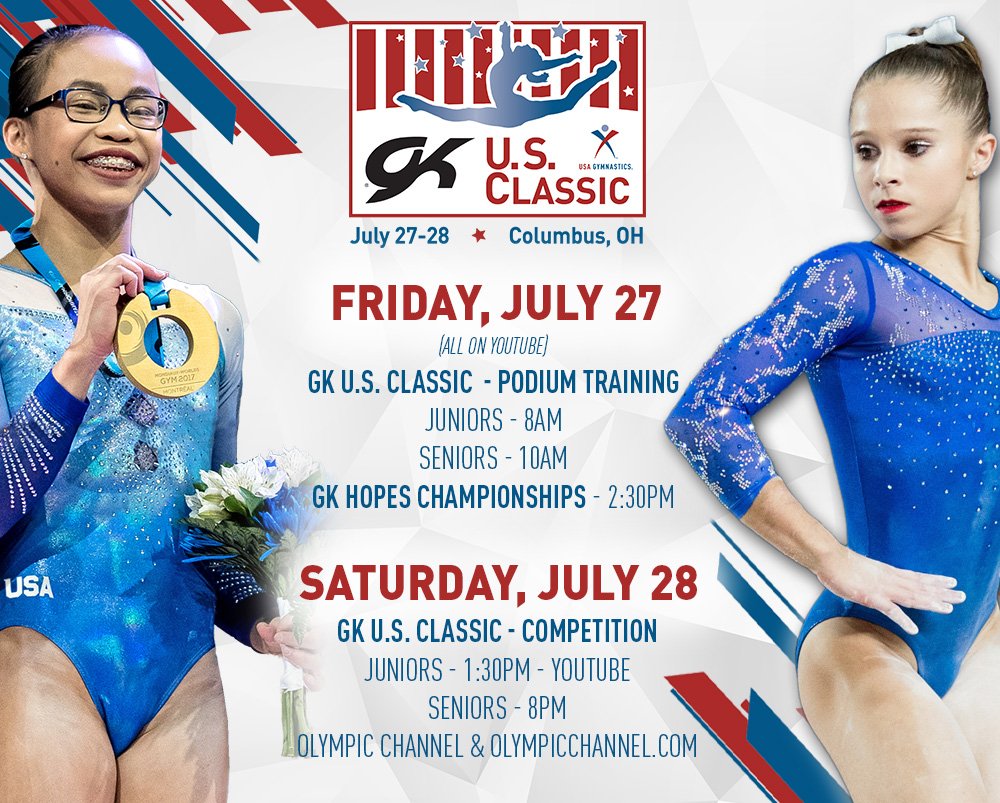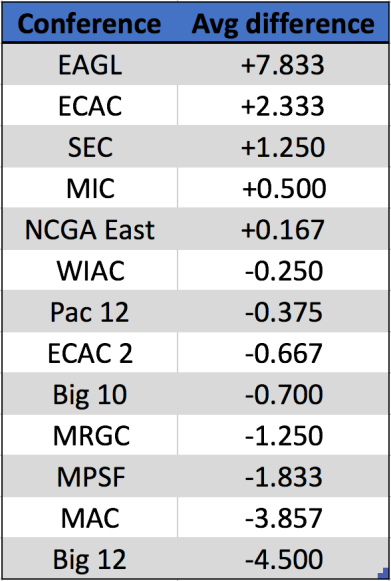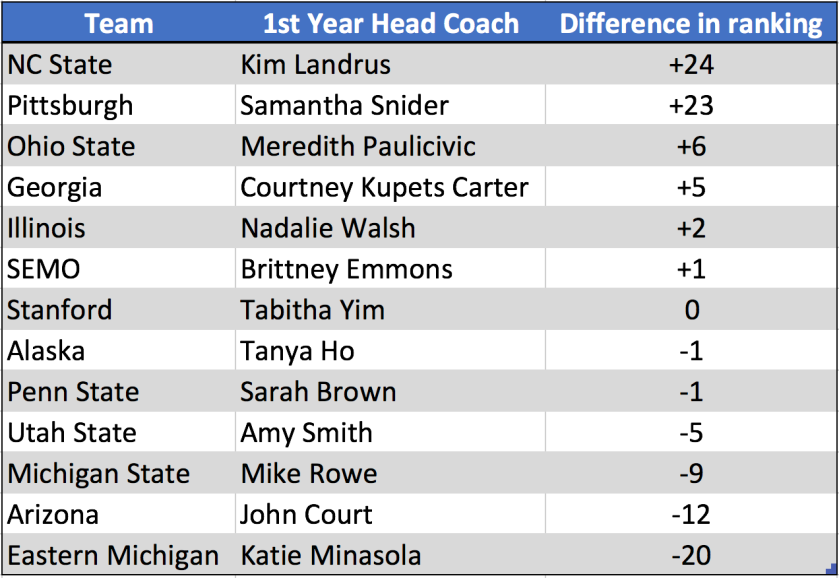
It’s probably a little bit premature to be looking to the world’s team before classics has even happened, but hey, I enjoy speculation. I’ll write an updated post after classics/nationals after we get a better sense of who looks strong on which event.
Note: Trinity Thomas is enrolling at Florida for summer classes, so I’m assuming that she’s done with elite (at least for the time being) and did not include her in this article. Update (6/27/2018): Trinity has announced that she is trying for the world team. More on her in my next update.
The Locks
Simone Biles
Ok, so it may be jumping the gun a little bit to consider someone who we haven’t seen compete in almost 2 years as a lock for the worlds team, but it’s Simone Biles, so I think it’s pretty safe to assume that, barring injury, she’s going to make the team. Her training videos have looked amazing, and if she even looks half as good as she did in Rio, she’s on the team.
Morgan Hurd
Despite being the reigning world all around champion (albeit surprisingly) I wouldn’t have considered her a lock a few months ago, but she’s looked great so far this year (minus that scary fall on beam at Pac Rims), even better than she did at worlds last year. She’s solid on all four events, so she could help the team anywhere, and she would likely contend for event finals on both beam and floor. Plus it doesn’t seem right to not let the reigning world champion at least try to defend her title.
The Contenders
Riley McCusker
We haven’t seen much of Riley lately, which I’m assuming is because she’s still recovering from her injury. At this point, it’s hard to say whether she will realistically contend for the world’s team, but if healthy, she could definitely help out the team on any event (most especially bars and beam). We’ll just have to wait and see what she shows up with at classics.
Gabby Perea
Like Riley, it’s hard to say where Gabby stands since we haven’t seen her compete in so long, but she will be a solid all around option if healthy. She only competed bars at nationals last year, but even if that’s all she competed this year, it might be worth it to take her to worlds anyway. She has the potential to compete one of the most difficult bar routines in the world, and would be a threat for an individual bars medal.
Maile O’Keefe
As the reigning junior national champion, Maile was one of the new seniors expected to make a big splash this year. While she’s had a lackluster season so far, if she can get back into the swing of things in time for classics, her potential on all 4 events, especially bars, could help her challenge for a world’s spot.
Jade Carey
Jade is probably the closest to a lock of all these contenders, especially with her recent bars upgrades. The main reason I didn’t put her in the lock category is because, with Simone back, her strong Vault and Floor may not be as critical (or then again, it might be, see more below).
Ragan Smith
If Ragan shows up to Classics at the level that she was before worlds, then I would probably consider her to be a lock for the team. The only time we’ve seen her this year so far was at Jesolo, where she was amazing on beam as usual, but her lackluster vault and floor still leaves her as a question mark. We’ll just have to wait and see what she does this summer.
Emma Malabuyo
Emma is another new senior that has been highly anticipated. Like Ragan, we’ve only seen her at Jesolo so far, but she appears to be living up to her hype. Her only disadvantage is the fact that her strongest events (beam and floor) may not fit into the team’s needs, especially if Ragan Smith is back to her usual level.
The Others
These are other gymnasts to watch out for, but they don’t seem to be the most likely candidates for the world’s team at this point.
Grace McCallum
Grace is a new senior who has flown under the radar, but she does have 2 vaults and big potential on floor. Unfortunately, she probably falls behind both Simone and Jade for a vault spot and behind several others for a floor spot.
Jordan Chiles
Jordan is great on all 4 events, but she hasn’t shown to be in the top three on any event, which does not bode well for a spot on the team.
Correction (6/19): Forgot to mention that she also has 2 vaults, with one of them being the amanar, but her 2nd vault doesn’t have the difficulty that both Simone and Jade have.
Margzetta Frazier
Like Jordan, she’s great on all 4 events, but isn’t in the top three on any event.
The Needs of the Team
Assuming Simone and Morgan are locks, the other three members will need to fill the holes. Simone and Morgan both have event medal potential on beam and floor, and Simone has medal potential on vault (duh). Simone also has an amanar (or at least we assume she will), and, while Morgan does not, her clean DTY can also help the team. Bars is the event that is neither Simone’s nor Morgan’s strongest, but they could both contribute in qualifications and/or the team final (just probably not as the anchor).
The first obvious hole in the team is on bars. This is where Maile, Gabby, and/or Riley would come in. All three of them have event final medal potential, and can also contribute on the other three events if needed. My guess is that at least one of these three will make the team.
In my opinion, the biggest dilemma for the team right now is whether or not a second strong bars worker is needed or if another strong vaulter is needed. Like I said before, both Simone and Morgan are good on bars, but neither are locks for a team final spot on bars. Pretty much everyone on the team has a good DTY, but it still would be nice to have another high difficulty vault to go along with Simone’s. This is where Jade could fit into the picture. If it seems more necessary to have another strong vaulter, then Jade would make the team. If it seems more necessary to have another strong bars worker, than another one of Maile, Gabby, or Riley would make the team.
The fifth spot could pretty much go to anyone, but my guess is it will go to either Ragan or Emma because they both have big potential in the all around as well as on beam and floor.
Possible team setups
The way I see it, there are two ways to go about setting up the team. This is based on the dilemma I mentioned above: is bars or vault more important?
Note: Since some of the gymnasts are essentially competing for the same role on the team, I abbreviated the spot by their first initials (RE for the Ragan/Emma spot for example) to make things clearer.
Team 1 (favors the bars):
Simone, Morgan, Ragan/Emma (RE), two of Maile/Gabby/Riley (MGR)
Vault: (anyone), anyone, anyone, Simone (pretty much everyone can do a decent DTY, so any of the team members could fill these spots, with Simone as the anchor)
Bars: (Morgan/RE), Simone, MGR, MGR
Beam: (MGR), Morgan, RE, Simone
Floor: (MGR), Morgan, RE, Simone
The major disadvantage to this setup is the fact that Morgan and the Ragan/Emma spot can’t both do the all around.
Team 2 (favors the vault)
Simone, Morgan, Jade, Ragan/Emma (RE), one of Maile/Gabby/Riley (MGR)
Vault: (RE/Morgan/MGR), RE/Morgan/MGR, Jade, Simone
Bars: (RE/Morgan/), RE/Morgan, Simone, MGR
Beam: (MGR/Morgan), MGR/Morgan, RE, Simone
Floor: (RE/Morgan/Jade), RE/Morgan/Jade, RE/Morgan/Jade, Simone
This team seems more balanced overall but is probably a bit lacking in bars potential (depending on what kind of bars Simone shows up with), compared to countries like Russia.
So there you have it, the world’s team dilemma. It’s still too early to tell who will make the team, but this gives us a pretty good idea of what to watch out for at classics and nationals this summer.
